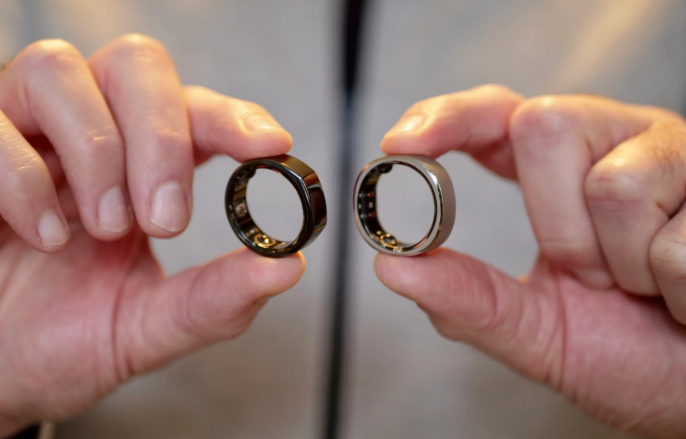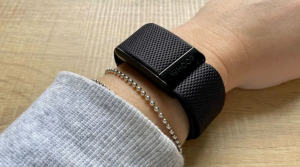The world of wearable technology is buzzing with the arrival of a new contender. The Samsung Galaxy Ring, officially launched on July 10, 2024, is set to challenge the long-standing champion, the Oura Ring. Both sleek devices promise to unlock a deeper understanding of your health and wellness, right from your finger. But how do they stack up against each other? This comprehensive comparison will dissect every facet of the Samsung Galaxy Ring and the Oura Ring Gen 3 to help you decide which smart ring deserves a place in your life.
At a Glance: Feature Face-Off
For those who want a quick overview, here’s a direct comparison of the key features of the Samsung Galaxy Ring and the Oura Ring Gen 3.
| Feature | Samsung Galaxy Ring | Oura Ring Gen 3 |
| Price | Starting at $399.99 | Starts at $299, with premium finishes costing more. |
| Subscription | No subscription fee required. | $5.99/month for full access to features. |
| Key Health Metrics | Heart Rate, Sleep Tracking, Blood Oxygen, Skin Temperature, Menstrual Cycle Tracking, Activity Tracking, Stress Monitoring. | Heart Rate (daytime & nighttime), Sleep Analysis, Blood Oxygen, Body Temperature, Menstrual Cycle Prediction, Stress Monitoring, 30+ Activity Detection. |
| Unique Scores | AI Energy Score and Wellness Tips. | Readiness Score, Sleep Score, Activity Score. |
| Design & Materials | Titanium in Titanium Black, Titanium Silver, Titanium Gold. | Titanium with various finishes like Silver, Black, Stealth, Gold. |
| Battery Life | Up to 7 days, depending on size. | Up to 7 days. |
| Compatibility | Android only (Android 11 or above), with some features exclusive to Samsung Galaxy phones. | iOS and Android compatible. |
| Water Resistance | IP68, up to 100 meters. | Up to 100 meters. |
| Special Features | Integrates with Galaxy Watch for enhanced tracking and extended ring battery life. Comes with a multi-functional charging case. | Integrates with over 40 other apps like Strava. |
Deep Dive: Understanding the Core Differences
What Health Metrics Do They Track?
Both rings are packed with advanced sensors to provide a comprehensive overview of your well-being.
The Samsung Galaxy Ring is equipped with an accelerometer, a PPG (photoplethysmography) sensor for heart rate, and a skin temperature sensor. It tracks your activity, sleep, heart rate, and menstrual cycle, integrating all this data into the Samsung Health app to offer personalized health insights. During sleep, it monitors blood oxygen, nighttime movement, respiration, and skin temperature to generate a sleep score. A standout feature is the AI-generated Energy Score, which gives you a daily snapshot of your readiness based on your sleep and activity.
The Oura Ring Gen 3 also boasts a suite of sensors, including green and red LEDs and infrared sensors, to measure daytime and activity heart rates, as well as blood oxygen levels. It excels in detailed sleep analysis, tracking your sleep stages (light, deep, REM), resting heart rate, and heart rate variability (HRV). This data contributes to its signature Readiness Score, which helps you understand how well-rested and recovered your body is. It also offers features for women's health, such as cycle and pregnancy insights.
Design and Comfort: What’s it Like to Wear 24/7?
A smart ring needs to be comfortable enough for continuous wear, and both contenders are designed with this in mind.
The Samsung Galaxy Ring is crafted from Grade 5 Titanium and comes in three colors: Titanium Black, Titanium Silver, and Titanium Gold. It’s remarkably lightweight, weighing between 2.3 and 3 grams depending on the size, and is about 2.6mm thick. It's available in nine sizes (US sizes 5 through 13).
The Oura Ring Gen 3, also made of durable and lightweight titanium, weighs between four and six grams. It comes in two styles and various finishes, including silver, black, stealth, and gold. One of its key design features is the sensor bumps on the inside, which are designed to rest against the palm side of your finger for the most accurate readings.
The App Experience and Ecosystem Integration
The companion app is your window into the data collected by the ring.
The Galaxy Ring syncs with the Samsung Health app. This is a significant advantage for those already invested in the Samsung ecosystem. If you own a Galaxy Watch, wearing it with the ring can extend the ring's battery life by up to 30%, as the watch will handle some of the primary tracking. However, the ring is only compatible with Android phones running Android 11 or higher, and some of the more advanced AI features require a Samsung phone.
The Oura Ring, on the other hand, works with both iOS and Android devices. Its app is widely praised for its user-friendly interface and the depth of its insights. Oura also allows for integration with a wide range of third-party health and wellness apps, such as Strava and Apple Health.
Pricing and the Subscription Question
One of the most significant distinctions between the two rings is their pricing model.
The Samsung Galaxy Ring is priced at $399.99 and, crucially, does not require a subscription to access its features. This one-time cost is a major selling point.
The Oura Ring Gen 3 starts at a lower price point of $299, a $5.99 monthly Oura Membership is required. While the initial hardware cost is less, the ongoing subscription can add up over time.
Who is the Galaxy Ring For?
The Samsung Galaxy Ring is an excellent choice for:
-
Android and Samsung Users: If you're already part of the Samsung ecosystem, the seamless integration with Samsung Health and other Galaxy devices is a huge plus.
-
Subscription-Averse Individuals: The lack of a monthly fee makes it a more predictable long-term investment.
-
Those Seeking an AI-Powered “Energy Score”: If a single, easy-to-understand metric of your daily readiness is appealing, the Energy Score is a compelling feature.
Who is the Oura Ring For?
The Oura Ring remains a top contender for:
-
iPhone and Android Users: Its cross-platform compatibility makes it accessible to a broader audience.
-
Data-Driven Health Enthusiasts: If you love diving deep into sleep stages, HRV, and other detailed metrics, Oura's app and analytics are hard to beat.
-
Users Who Value App Integrations: The ability to connect with a wide range of other health and fitness apps adds to its versatility.
Frequently Asked Questions (FAQ)
1. Can I wear the Galaxy Ring and Oura Ring while swimming?
Yes, both rings are water-resistant up to 100 meters, making them safe for swimming and showering.
2. Which ring is more accurate for sleep tracking?
Oura has a long-standing reputation for its detailed and accurate sleep analysis. The Galaxy Ring also offers advanced sleep tracking, but Oura is often considered the gold standard in this area.
3. Do I need a sizing kit before buying?
Yes, for both rings, it is highly recommended to use a sizing kit to ensure the most accurate and comfortable fit, which is crucial for sensor performance. Oura provides a free sizing kit upon purchase, and Samsung also offers one.
The Verdict
The launch of the Samsung Galaxy Ring has undeniably shaken up the smart ring market. Its subscription-free model and seamless integration into the popular Samsung ecosystem make it a formidable competitor. For Android users, especially those already using Samsung devices, the Galaxy Ring is an incredibly compelling option.
However, the Oura Ring's strengths should not be underestimated. Its cross-platform compatibility, reputation for in-depth sleep and readiness tracking, and mature app experience will continue to make it the preferred choice for many, particularly iPhone users and those who prioritize deep data analysis.
Ultimately, the best smart ring for you in 2025 will depend on your smartphone, your budget, and what you want to achieve on your wellness journey.









